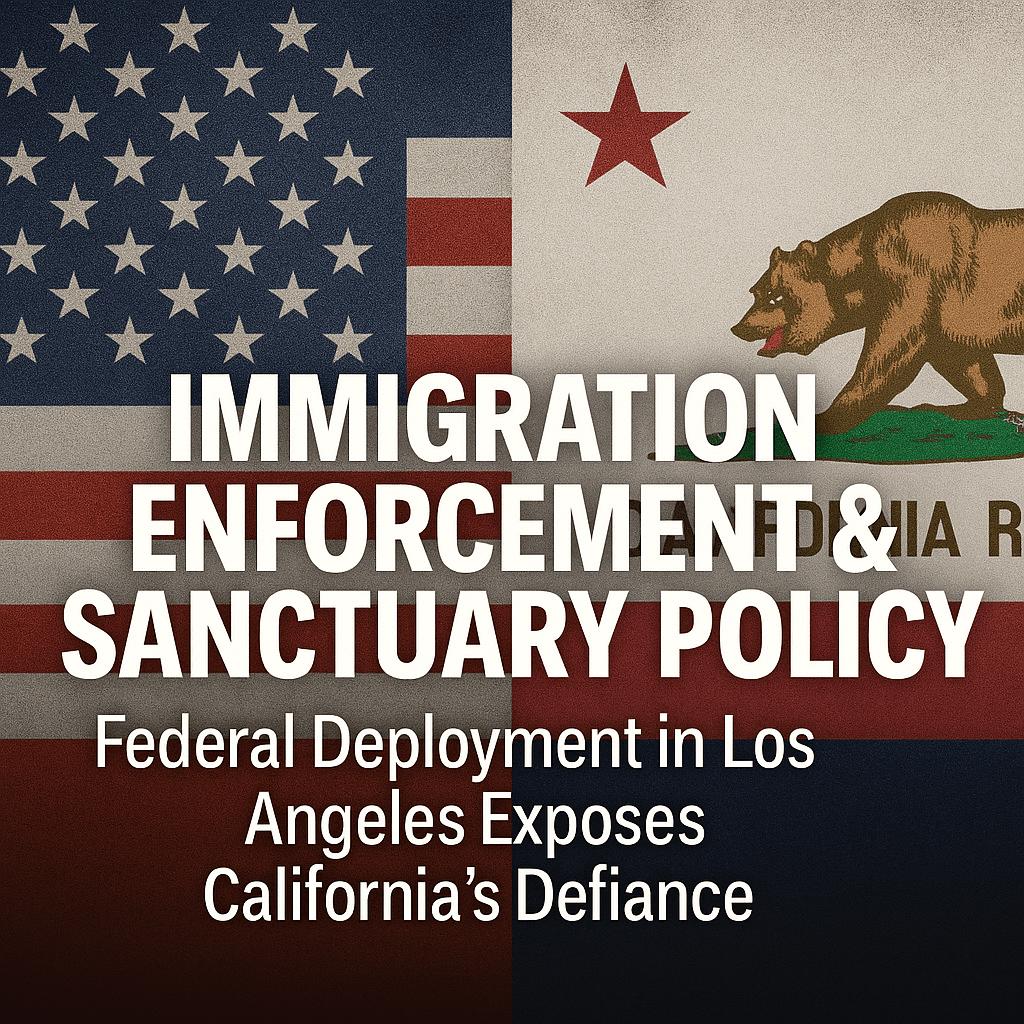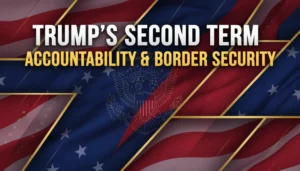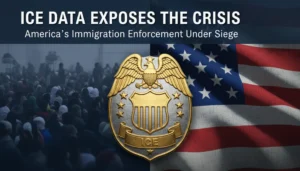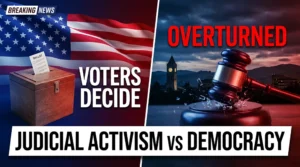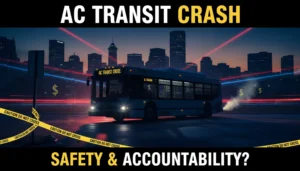Immigration Enforcement & Sanctuary Policy: Federal Deployment in Los Angeles Exposes California’s Defiance
The recent deployment of federal forces to Los Angeles has thrust California’s sanctuary policies into the national spotlight, exposing the dangerous consequences of state defiance of federal immigration law. As National Guard troops and U.S. Marines were called in to restore order following immigration enforcement protests that spiraled into riots, the fundamental question emerges: Has California’s sanctuary state status created a crisis of lawlessness that endangers citizens and undermines national sovereignty?
Federal Intervention: A Necessary Response to Sanctuary-Fueled Chaos
On June 30, 2025, the Department of Justice filed a lawsuit against the City of Los Angeles, Mayor Karen Bass, and the Los Angeles City Council over sanctuary policies that actively obstruct federal immigration enforcement. The lawsuit represents a decisive step by the Trump administration to reassert federal authority over immigration law after weeks of escalating unrest in Los Angeles.
“Sanctuary policies were the driving cause of the violence, chaos, and attacks on law enforcement that Americans recently witnessed in Los Angeles,” Attorney General Pamela Bondi stated in the DOJ’s announcement. “Jurisdictions like Los Angeles that flout federal law by prioritizing illegal aliens over American citizens are undermining law enforcement at every level – it ends under President Trump.”
The deployment of military personnel to Los Angeles came after local law enforcement, hamstrung by sanctuary policies, proved unable to contain violent protests against immigration enforcement operations. The riots resulted in an estimated $75 million in property damage and dozens of injuries to law enforcement officers, according to preliminary assessments by the Department of Homeland Security.
The Constitutional Case Against Sanctuary Policies
U.S. Attorney Bill Essayli for the Central District of California emphasized the constitutional foundations of the federal government’s position: “The United States Constitution’s Supremacy Clause prohibits the City from picking and choosing which federal laws will be enforced and which will not. By assisting removable aliens in evading federal law enforcement, the City’s unlawful and discriminatory ordinance has contributed to a lawless and unsafe environment.”
This argument finds strong support in Supreme Court precedent. In Arizona v. United States (2012), the Court affirmed that “the Government of the United States has broad, undoubted power over the subject of immigration and the status of aliens.” Even while striking down parts of Arizona’s immigration enforcement law, the Court recognized federal primacy in immigration matters.
Former federal judge J. Michael Luttig explains, “The Constitution vests the federal government with exclusive authority over immigration. When states or localities adopt policies designed to obstruct federal immigration enforcement, they undermine the constitutional order itself.”
The Public Safety Crisis Created by Sanctuary Policies
Los Angeles’s sanctuary ordinance prohibits city resources, including police personnel, from being used for immigration enforcement. This policy has created dangerous gaps in law enforcement cooperation that jeopardize public safety.
According to data from Immigration and Customs Enforcement (ICE), Los Angeles County declined over 8,000 detainer requests for criminal aliens between 2020 and 2025. These included individuals charged with or convicted of serious offenses including homicide, sexual assault, and drug trafficking.
“When local jurisdictions refuse to honor ICE detainers, they’re releasing dangerous criminals back into communities rather than transferring them to federal custody for deportation proceedings,” explains Tom Homan, former Acting Director of ICE. “The victims of these crimes are disproportionately members of immigrant communities themselves.”
The connection between sanctuary policies and public safety was highlighted in a 2024 study by the Center for Immigration Studies, which found that jurisdictions that implemented sanctuary policies experienced an average 17% increase in recidivism among criminal aliens compared to non-sanctuary jurisdictions.
The Fiscal Burden on California Taxpayers
Beyond public safety concerns, California’s defiance of federal immigration law imposes substantial costs on state taxpayers. According to the Federation for American Immigration Reform, illegal immigration costs California taxpayers approximately $21.8 billion annually in education, healthcare, law enforcement, and social services.
These costs have grown significantly during the Biden-Harris and Newsom administrations, which pursued policies that incentivized illegal immigration. Governor Newsom expanded healthcare coverage to all illegal immigrants regardless of age in 2024, adding an estimated $2.6 billion annually to the state’s Medi-Cal program.
“California taxpayers are essentially subsidizing the state’s defiance of federal law,” notes Dr. Steven Camarota, Director of Research at the Center for Immigration Studies. “When you combine direct costs with the fiscal impact of depressed wages for low-skilled workers, the burden becomes unsustainable.”
The recent riots in Los Angeles have only added to this fiscal burden. Early estimates suggest that the deployment of National Guard troops and federal law enforcement will cost taxpayers over $30 million, while property damage and lost business revenue will reach into the hundreds of millions.
The Newsom Administration’s Calculated Defiance
Governor Gavin Newsom has positioned himself as a leading opponent of federal immigration enforcement, building on policies established during the first Trump administration. In 2017, California passed SB 54, the “California Values Act,” which limited state and local law enforcement cooperation with federal immigration authorities.
Newsom has expanded these policies during his tenure, signing additional legislation restricting cooperation with ICE and increasing state funding for legal services for those facing deportation. These actions represent a deliberate strategy to obstruct federal immigration enforcement.
“Governor Newsom has consistently prioritized political posturing over public safety and the rule of law,” argues former San Diego Mayor Kevin Faulconer. “By encouraging defiance of federal immigration authorities, he has created the conditions for the chaos we’re now witnessing in Los Angeles.”
The governor’s approach appears increasingly out of step with public sentiment. A May 2025 Berkeley IGS Poll found that 58% of California voters believe state and local law enforcement should cooperate with federal immigration authorities when dealing with individuals who have committed serious crimes, while only 32% support the current sanctuary approach.
The Federal Response: Restoring Law and Order
The Trump administration’s response to California’s defiance has been multipronged. Beyond the lawsuit against Los Angeles and the deployment of federal forces, the administration has:
- Increased ICE enforcement operations in sanctuary jurisdictions
- Withheld certain federal law enforcement grants from jurisdictions that refuse to cooperate
- Deployed additional immigration judges to expedite removal proceedings
- Authorized Border Patrol to conduct operations deeper into the interior in areas adjacent to sanctuary jurisdictions
These measures reflect a determination to reassert federal authority over immigration enforcement after years of obstruction by state and local officials.
“The Constitution doesn’t give states the option to nullify federal immigration law,” explains former Attorney General William Barr. “When states attempt to obstruct federal authorities from carrying out their constitutional duties, the federal government has not just the right but the obligation to take corrective action.”
A Path Forward: Cooperation Over Confrontation
While the current confrontation between federal authorities and California officials appears headed for protracted legal battles, a more productive approach would involve renewed cooperation between federal, state, and local authorities.
Several principles should guide this cooperation:
- Recognition of federal primacy: State and local officials must acknowledge the federal government’s constitutional authority over immigration enforcement.
- Focus on criminal aliens: Enforcement priorities should target individuals who pose genuine public safety threats, not law-abiding residents.
- Community trust: Law enforcement can maintain community trust while still cooperating with ICE on serious criminal matters.
- Fiscal responsibility: States should recognize the unsustainable costs of policies that incentivize illegal immigration.
- Rule of law: Both federal and state officials should commit to upholding the rule of law rather than selectively enforcing statutes based on political preferences.
Conclusion: Sovereignty, Security, and the Rule of Law
The federal deployment in Los Angeles and the legal action against the city’s sanctuary policies represent a necessary reassertion of constitutional order and the rule of law. While California officials may disagree with federal immigration policies, they lack the authority to obstruct their enforcement.
As the situation in Los Angeles demonstrates, sanctuary policies ultimately harm the very communities they purport to protect by undermining public safety, imposing fiscal burdens on taxpayers, and creating conditions for civil unrest. The path forward requires California to abandon its posture of defiance and recognize that in our federal system, national immigration laws must be respected and enforced.
The fundamental principles at stake—national sovereignty, public safety, and fiscal responsibility—transcend partisan politics. They represent core conservative values that should guide immigration policy at all levels of government. As federal authorities work to restore order in Los Angeles, they are also working to restore proper constitutional boundaries and protect the rule of law for all Americans.


